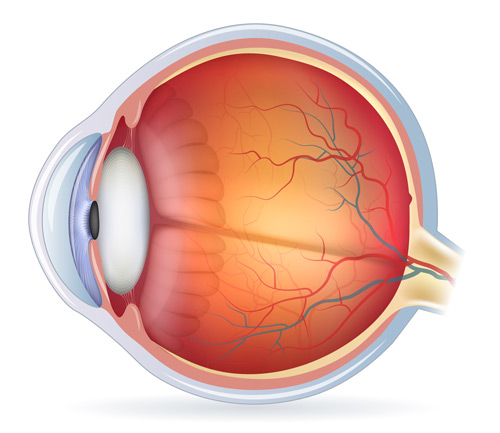
To appreciate how the eye functions, imagine yourself as a beam of light reflected from a 100-foot tree into the eye of a living person. You are the image of the tree, traveling at the speed of light and about to enter an obstacle course on your way to the brain of the observer.
Your first encounter is your passage through the clear convex cornea which bends (refracts) you and slows you down. It also shrinks you to a manageable size (a little larger than a nickel). Next you squeeze through a round, adjustable opening, the pupil, formed by a colorful membrane, the iris, which, if you are too bright, will reduce your intensity.
You now encounter a rather dense but transparent medium, the lens, which not only bends you even more, but unceremoniously turns you upside down. It then aims (focuses) you at the back of the eye, the retina, which you strike after passing through a clear, sticky, gel-like substance, the vitreous humor. You are now the inverted image of a 100-foot tree shrunk to the size of a postage stamp and flattened against the retina. But not for long! Instantly you are transformed from a beam of light into an electrical impulse, and flashed along the optic nerve from the retina to the brain. You are now perceived as a 100 foot, three-dimensional, right-side-up tree. All of this happens in a fraction of a second.
To recap: the cornea is the clear, transparent front covering which admits light and begins the refractive process. It also keeps foreign particles from entering the eye.
The pupil is an adjustable opening that controls the intensity of light permitted to strike the lens. The lens focuses light through the vitreous humor, a clear gel-like substance that fills the back of the eye and supports the retina.
The retina receives the image that the cornea focuses on the eye’s internal lens and transforms this image into electrical impulses that are carried by the optic nerve to the brain.
